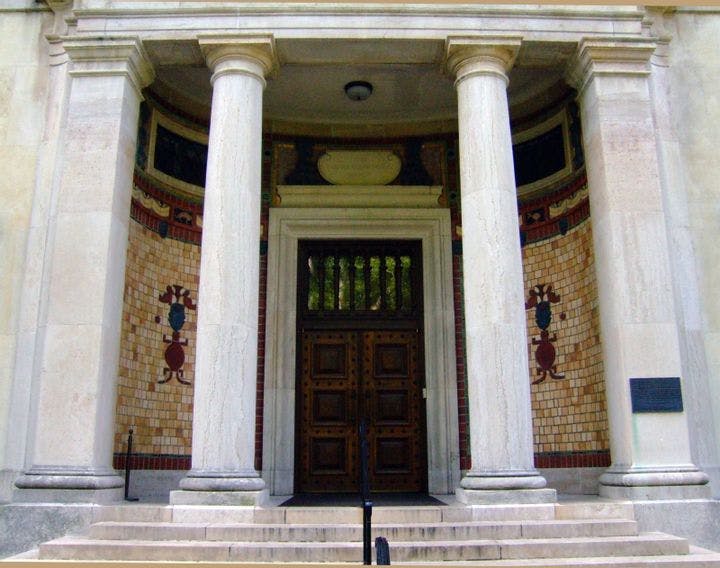Fall 2010
Barnes Storm
– The Wilson Quarterly
On the much-discussed move of the Barnes art collection.
Many in the art world are celebrating the Barnes Foundation’s relocation from Merion, Pennsylvania, to its new home next to the Philadelphia Museum of Art in 2012 as the long-overdue unlocking of one of the world’s premier art collections. But to defenders of the original vision of Albert Coombs Barnes (1872–1951)—and count CityArts senior art critic Lance Esplund firmly among that number—the uprooting is a sacrilege, “no different from the destruction of a Gothic cathedral.”
The Barnes collection has always excited attention not only because of its scale (conservative appraisals put its worth between $20 billion and $30 billion), but the uniqueness of its arrangement. Barnes eschewed the conventional curatorial approach of hanging art chronologically, or by period or “school,” preferring to display his masterpieces on the basis of other similarities—in color, subject matter, technique, or artistic sensibility. A Picasso might hang next to an African mask, or a buxom Renoir nude next to similar works by Rubens or Titian. This is not just an idiosyncratic approach. “It is the way artists look at art,” Esplund writes. After a 1930 visit to the Barnes Foundation, the French artist Henri Matisse prophesied that the Barnes aesthetic would “destroy the artificial and disreputable presentation of the other collections.”
Matisse proved to be overly optimistic, perhaps because only a select few ever saw the collection. While the mercurial Barnes, who made his fortune in pharmaceuticals, was still alive, students had to demonstrate that they were “in earnest” to gain admission; after his death, it took a lawsuit brought by The Philadelphia Inquirer and its publisher, Walter Annenberg, to force the museum to open to the public in 1961. Since the 1990s, the trend has been to adopt the modus operandi of other museums—raising admission prices, opening a gift shop, and aggressively courting attendance and donations. None of these efforts has offset the dwindling endowment of the foundation, which has struggled to care properly for the masterpieces.
Financial distress left the foundation vulnerable to power brokers such as Pennsylvania governor Edward G. Rendell, the Annenberg Foundation, and officials at the Philadelphia Museum of Art, who conditioned aid on the collection’s becoming a downtown Philadelphia tourist attraction. But in Esplund’s view, though the new museum “will supposedly replicate the scale, proportion, and configuration of the existing galleries, it will be through a Frankenstein’s monster–like revivification.” Gone will be “Barnes’s spectacular and well-thought-out views that lure and entice you from, for example, the forms in a particular Cézanne in one gallery to those in a particular Cézanne or Courbet or Renoir in the next.” The loss of the original Barnes, Esplund argues, is another step in the homogenization of museum collections, as larger institutions gobble up the smaller, unique places, often designed, like the Barnes, “to get us closer to the minds of art’s makers.”
THE SOURCE: “No Museum Left Behind” by Lance Esplund, in The Weekly Standard, May 31, 2010
Photo courtesy of Flickr/Amy Fry
